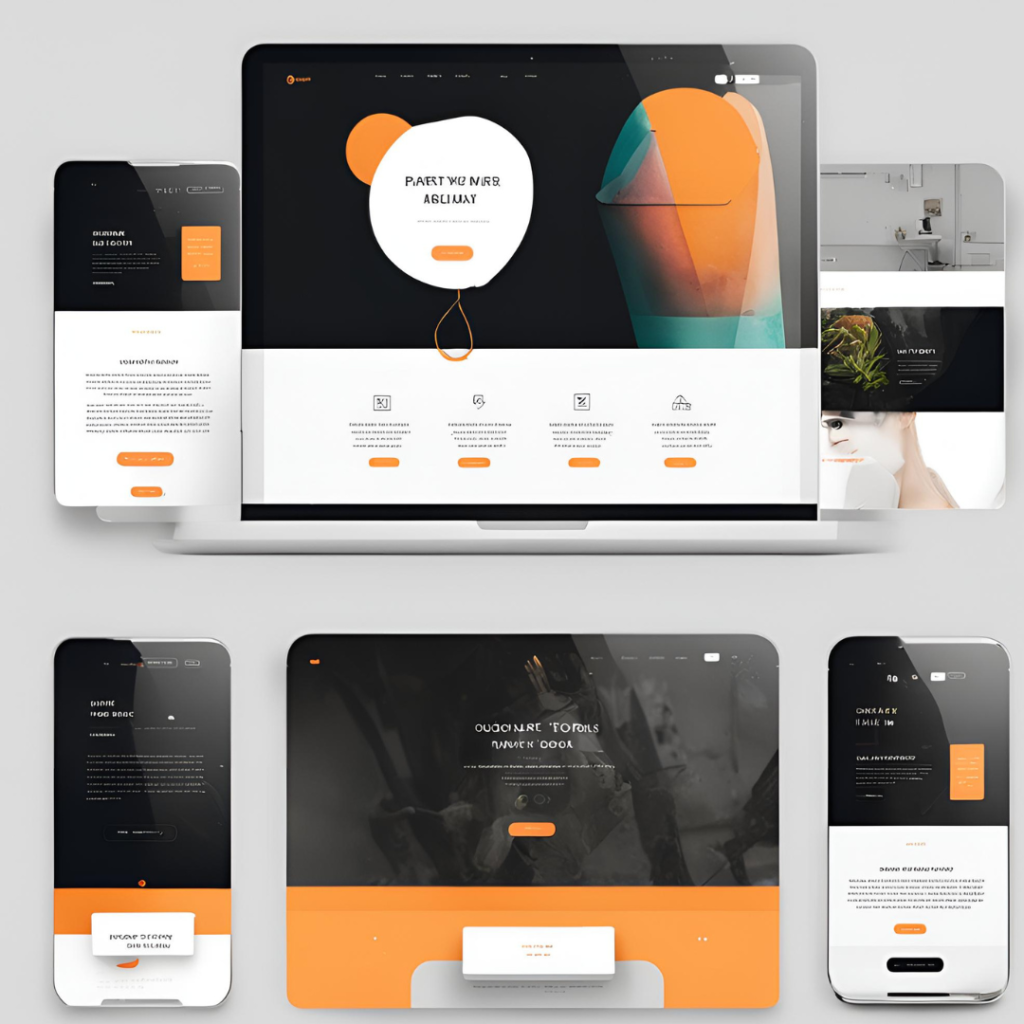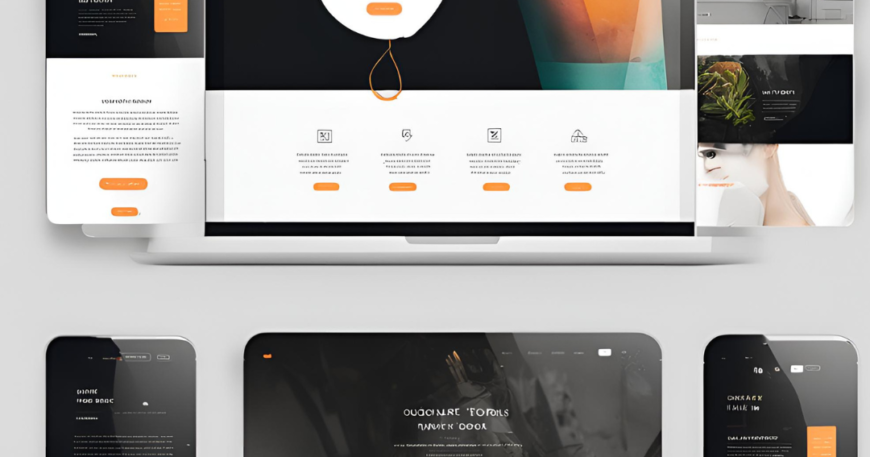Introduction
In a world where first impressions are often digital, having an eye-catching, user-friendly portfolio is crucial. Whether you’re a freelancer, an artist, or a corporate professional, your portfolio acts as your digital business card. It’s more than just a showcase of your work; it’s a reflection of your personal brand, your professionalism, and your creativity.

Understanding Portfolio Website Templates
Definition and Purpose
A portfolio website template is a pre-designed webpage or set of webpages that you can customize to create your portfolio. Think of it as a ready-made structure where you add your content. The primary purpose of these templates is to simplify the process of building a professional-looking portfolio without needing advanced web development skills.
Types of Portfolio Templates
Portfolio templates come in various forms, including:
- Single-page Templates: Ideal for minimalist portfolios with concise information.
- Multi-page Templates: Best for detailed portfolios with multiple sections like bio, projects, testimonials, and blog.
- Interactive Templates: These templates offer dynamic elements like animations and hover effects to engage visitors.
Key Features to Look For
When selecting a portfolio website template, ensure it includes the following features:
Responsive Design
In today’s multi-device world, your portfolio must look great on desktops, tablets, and smartphones. A responsive design adapts to different screen sizes, providing a seamless experience for all users.
Customization Options
Look for templates that offer flexibility in layout, color schemes, fonts, and content blocks. This customization allows you to align the template with your personal brand and style.
User Experience (UX) Focus
A well-designed portfolio template prioritizes user experience. It should have intuitive navigation, clear calls to action, and a layout that guides visitors through your work effectively.
SEO Optimization
An SEO-optimized template ensures your portfolio is discoverable on search engines. Features like fast loading times, clean code, and built-in SEO tools can significantly boost your site’s visibility.
Speed and Performance
Templates should be lightweight and optimized for fast loading. Speed affects both user experience and SEO rankings.
Best Platforms for Portfolio Templates
WordPress
WordPress is a popular choice for its vast range of templates and plugins. It’s highly customizable and suitable for all types of portfolios.
Wix
Wix offers drag-and-drop functionality, making it user-friendly for beginners. It provides a variety of creative portfolio templates and a straightforward customization process.
Squarespace
Squarespace is known for its sleek, modern designs. It’s an excellent choice for creatives who want visually appealing templates with minimal setup.
Webflow
Webflow combines design flexibility with robust features, making it ideal for those with some web development knowledge. It allows for extensive customization and dynamic content.
Popular Portfolio Website Templates
For Designers
- Semplice: A customizable WordPress template focused on showcasing design work.
- Leverage: A multi-purpose template with a clean, modern design.
- Uncode: Known for its creative flexibility and aesthetic appeal.
For Photographers
- Photographer Portfolio by Wix: Simple and elegant, perfect for displaying photos.
- Novo: A sophisticated WordPress template with various gallery styles.
- Kallyas: A multipurpose template with stunning visual effects.
For Writers
- Typology: A minimalist WordPress theme focused on text-based content.
- Narratium: A template designed for storytelling with beautiful typography.
- Elegant Themes’ Divi: Offers customizable layouts and content modules.
For Developers
- Brando: A one-page template with a professional look and feel.
- Jevelin: Highly flexible, ideal for showcasing coding projects.
- Kalium: Features a creative layout suitable for tech portfolios.
How to Choose the Right Template
Assessing Your Needs
Identify what you want your portfolio to achieve. Are you looking to attract clients, showcase personal projects, or apply for jobs? Your goals will influence your choice of template.
Matching Template to Profession
Different professions have varying needs. A designer might prioritize visual appeal, while a writer may focus on readability and content presentation.
Considering Aesthetics and Functionality
Balance aesthetics with functionality. Your template should be visually pleasing but also easy to navigate and interact with.
Customization Tips for Portfolio Templates
Branding and Personalization
Incorporate your brand’s colors, fonts, and logos to make the template uniquely yours. Personalization helps you stand out and makes your portfolio more memorable.
Adding Interactive Elements
Interactive elements like animations, hover effects, and sliders can make your portfolio more engaging. However, use them sparingly to avoid overwhelming users.
Optimizing Content
Ensure your content is concise, clear, and relevant. Use high-quality images and videos, and write compelling descriptions for your projects.
Showcasing Your Work Effectively
Visual Presentation
Use grids, sliders, and galleries to present your work visually. Arrange your projects in a way that tells a story and highlights your skills.
Project Descriptions
Write detailed yet concise descriptions of your projects. Include the objectives, processes, and outcomes to give context to your work.
Testimonials and Case Studies
Adding testimonials and case studies can build credibility. Showcasing client feedback and project results demonstrates your effectiveness and reliability.
Ensuring Mobile-Friendliness
Importance of Mobile Optimization
With a significant amount of web traffic coming from mobile devices, ensuring your portfolio is mobile-friendly is crucial. A poorly optimized mobile experience can deter potential clients or employers.
Best Practices for Mobile Design
- Use a mobile-responsive template.
- Test your site on multiple devices.
- Simplify navigation and content layout for smaller screens.
SEO Strategies for Portfolio Websites
Keyword Integration
Incorporate relevant keywords naturally throughout your portfolio. This helps search engines understand your site’s content and improves your ranking.
Meta Descriptions and Tags
Write compelling meta descriptions and use tags to make your content more searchable. This can increase your site’s click-through rate from search results.
Image Optimization
Optimize images for fast loading by compressing them without losing quality. Use descriptive file names and alt text for better SEO.
Integrating Social Media
Adding Social Media Links
Include links to your social media profiles to build a broader online presence. This allows visitors to connect with you on multiple platforms.
Using Social Proof
Showcase social proof like follower counts, shares, and testimonials to enhance your portfolio’s credibility.
Maintaining and Updating Your Portfolio
Regular Updates
Keep your portfolio updated with your latest work and achievements. Regular updates show that you are active and continually producing quality work.
Monitoring Performance
Use analytics tools to monitor your portfolio’s performance. Understanding metrics like visitor behavior and site traffic can help you make informed improvements.
Gathering Feedback
Ask for feedback from peers, clients, and visitors. Constructive criticism can provide insights into how to enhance your portfolio further.
Common Mistakes to Avoid
Overcomplicating Design
While creativity is important, an overly complicated design can detract from your content. Aim for a clean, intuitive layout.
Ignoring User Experience
Prioritize the user experience by ensuring easy navigation, clear content, and fast load times. A poor user experience can drive visitors away.
Neglecting SEO
Don’t overlook SEO. An SEO-friendly portfolio is essential for increasing visibility and attracting organic traffic.
Future Trends in Portfolio Websites
AI and Automation
AI tools can automate various aspects of your portfolio, from content creation to personalized user experiences.
VR and AR Integration
Virtual and augmented reality can provide immersive ways to showcase your work, especially in fields like architecture and design.
Dynamic Content
Dynamic content, such as personalized project recommendations based on visitor behavior, can make your portfolio more interactive and engaging.
Conclusion
Creating an impressive portfolio doesn’t have to be a daunting task. By choosing the right template, focusing on user experience, and keeping your content fresh and relevant, you can build a portfolio that not only showcases your talents but also helps you stand out in your field. Remember, your portfolio is a living document that evolves with your career, so keep it updated and reflective of your best work.
FAQs
How often should I update my portfolio?
Aim to update your portfolio at least twice a year or whenever you complete a significant project. Regular updates keep your portfolio current and engaging.
Can I use multiple templates for different sections?
Yes, you can mix and match templates for different sections, but ensure they complement each other and maintain a cohesive design.
How do I measure the success of my portfolio website?
Use metrics like visitor traffic, engagement rates, and conversion rates to assess the performance of your portfolio. Tools like Google Analytics can provide detailed insights.
What are some affordable platforms for beginners?
Wix and WordPress are both budget-friendly options with user-friendly interfaces and a wide range of templates. They’re great for beginners.
How do I keep my portfolio safe from cyber threats?
Ensure your website has SSL encryption, use strong passwords, and keep your platform and plugins updated. Regular backups and security plugins can also help protect your site





